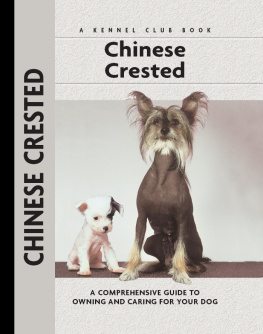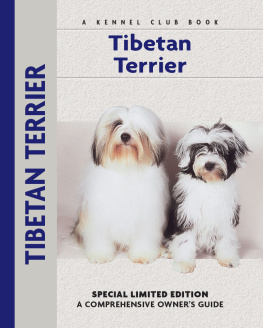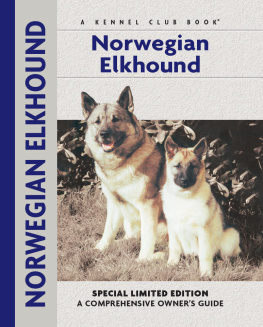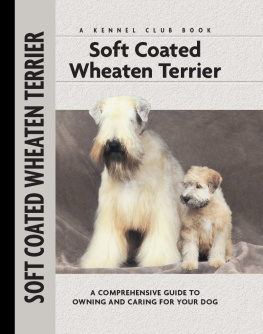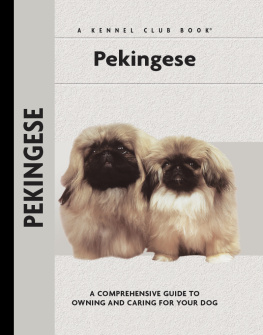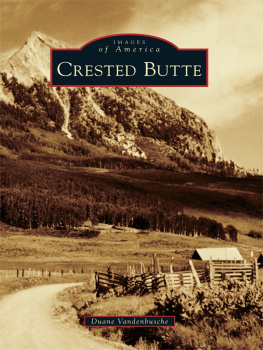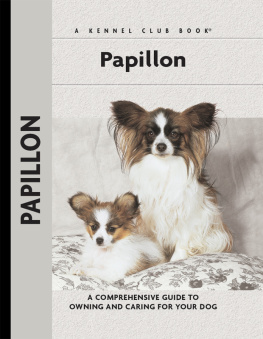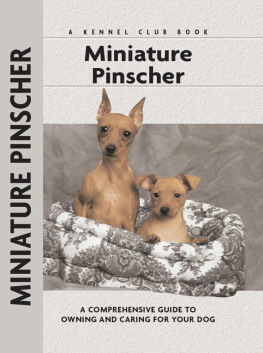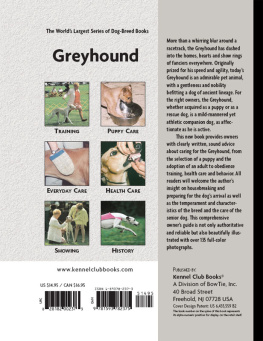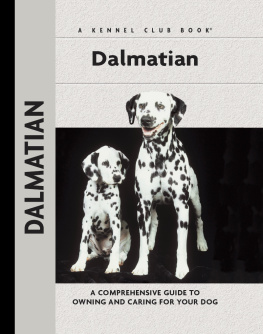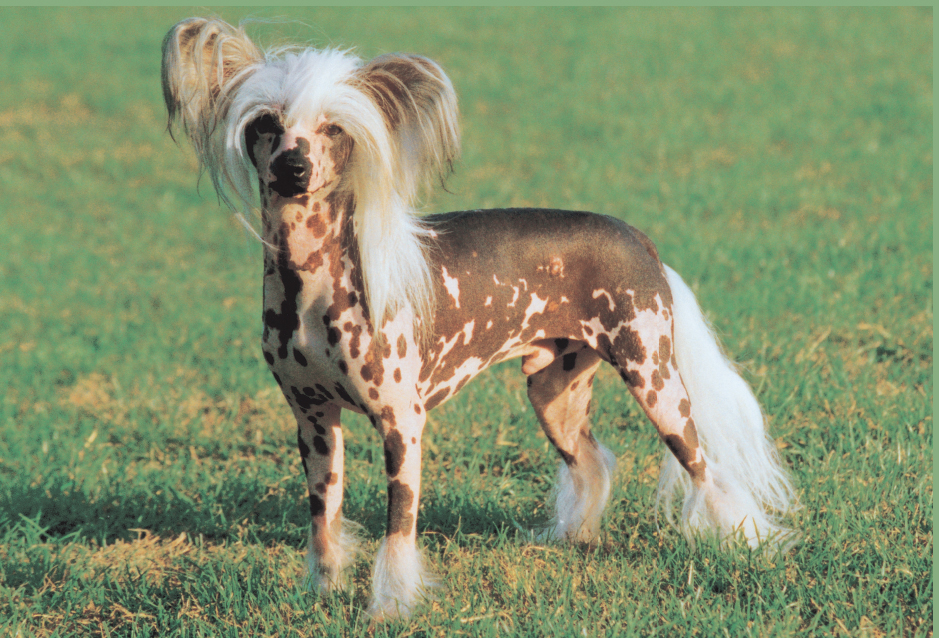
Speculation, fiction and novelty abound in the history of the Chinese Crested and the other hairless breeds.

ORIGIN OF THE BREED
If there were a definite answer to where the Chinese Crested actually originated, undoubtedly many authors would be very happy. However, the Chinese Cresteds history is a matter that has been the subject of speculation and debate, with almost more fiction than fact in its background.
The breed is certainly a distinctive one, but there are other hairless breeds, and the histories of various similar breeds may have been confused. The Chinese Crested, as we know it today, appeared in Chinas written history as long ago as the 13th century. Indeed, it is probable that the breed existed in that country long before then. Chinese seafarers and traders visited many places on their travels, and hairless dogs later appeared in many of their ports of call. Hairless dogs were certainly also mentioned in the chronicles of Christopher Columbus and the later Conquistadors.
It is possible that such dogs were kept on ships in order to control vermin, though, unhappily, they might also have been a source of food. Hairless dogs were undoubtedly found in both Asia and Africa during the 18th and 19th centuries. However, a similar dog was also found in Mexico and in Central and South America in the 16th century. This dog was known as the Xoloitzcuintli; it is still known by that name or, alternatively, as the Mexican Hairless, and is registered as a different breed from the Chinese Crested. While there are obvious similarities between the two breeds, there are indeed differences. Even within the breed, Xoloitzcuintli vary tremendously in size.
An important question arises, though, about whether the Chinese obtained their dogs from the Central and South American regions, or whether seafarers took along their own Chinese dogs to those lands, using them there for trade and barter. Perhaps one day the facts will be discovered but, to date, there is no conclusive evidence one way or the other.
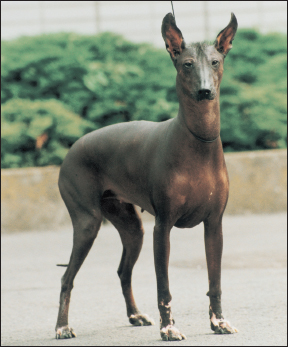
A modern Xoloitzcuintli, also known as the Mexican Hairless .
THE CHINESE CRESTED IN ART
There are several examples of the Chinese Cresteds appearance in works of art. Going back to the 15th century, a painting by Gerrard Davies titled Christ Nailed to the Cross includes a hairless dog very similar to the Chinese Crested breed we know today.
Another painting of note is one painted by Jacques Laurent Agasse (17671849). This depicts a male Crested, clearly of the deer type. As with some of the engravings found in 19th-century canine works, the dog shown in the painting would not find himself out of place in todays show ring.
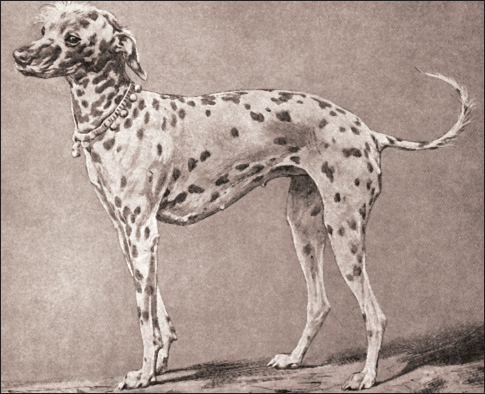
Illustration of a Chinese Crested in the early 19th century. The Crested was cited as one of the most unusual in appearance among the hairless breeds found in various parts of the world at that time.
PURE-BRED PURPOSE
Surely domestic dogs are the most versatile animal in the kingdom. From the tiny 1-pound lap dog to the 200- pound guard dog, dogs have adapted to every need and whim of their human masters. Humans have selectively bred dogs to alter physical attributes like size, color, leg length, mass and skull diameter in order to suit our own needs and fancies. Dogs serve humans not only as companions and guardians but also as hunters, exterminators, shepherds, rescuers, messengers, warriors, babysitters and more!
THE NINETEENTH CENTURY
The first Chinese Cresteds in Britain, brought to that country in the 1860s, were placed in zoological collections, and no serious attempt was made to breed from them; instead, they were treated as fascinating novelties. In the book Dogs of the British Isles, published in 1867, we read that the variety of Chinese dog furnished with a crest and tufted tail was by no means common. The dogs skin was described as spotted, and it was estimated that there were between 12 and 18 hairs on the surface of the body, thus making the tufts on the two extremities even more remarkable. It is interesting that 19th-century illustrations show the Chinese Crested with no tufts of longer hair on the feet. Indeed, most pictures of such dogs in the 1800s showed no hair in this area.
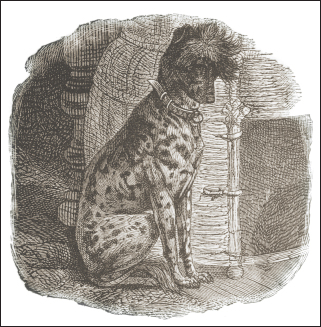
An engraving of a Chinese Crested Dog in the 19th century.
The bitch portrayed in Dogs of the British Isles was two years old in 1866 and was the only surviving puppy from a litter of six. When the book was written, she had never been bred from, due to the difficulty in finding a suitable male of the same strain. Because of its very affectionate disposition, it was believed that, if the breed could be developed, it would please many as something of a novelty pet.
Several early canine writers maintained that the Chinese Crested Dog was the same dog as the African Sand Dog and the hairless dogs of both Mexico and Japan. However, they did comment that the Chinese Crested had to have a crest on the top of the head and on the tail, something not common to all such breeds. The African Sand Dog also had a crest but, at least in those exhibited, it was shorter and much harsher than those of the Chinese Crested.
HAIRLESS BREEDS
There are many other hairless breeds of dog besides the Chinese Crested. Over the span of time these have included the Abyssinian or African Sand Dog, African Elephant Dog, Buenos Aires Hairless, Guatemalan Hairless, Inca Orchid, Nubian Dog, Peruvian Hairless, Small African Greyhound, Turkish Hairless, Xoloitzcuintli or Mexican Hairless and Zulu Sand Dog.
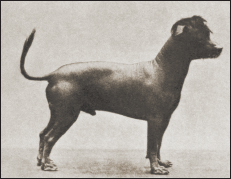
Engraving titled Hairless Dog from A Book of Beasts and Birds, published in 1893.
THE EARLY TWENTIETH CENTURY
As the 20th century turned, we find the Chinese Crested described as an outlandish breed of rather a rare sort. Charles Henry Lane, a prominent show judge of the day, wrote that, although he had judged Foreign Dog classes at all of the leading shows, there had been very few specimens of this scarce breed exhibited under him.
The best Chinese Crested that Lane had ever seen was called Chinese Emperor, owned by Mr. W. K. Taunton. He commented that the tuft of stiffish hair, either on the forehead or above it, was usually nearly white or a whitey brown in color, as was the tuft on the top end of the tail. In shape and style of body, the breed resembled a coarse, strong Italian Greyhound, but the Chinese Crested nearly always gave one the impression of its being adversely affected by the cold! In Lanes view, this was not a breed suitable for the climate of Britain, unless in what he termed favourable circumstances, and he had never heard of their being used for anything other than companions and pets.
In 1903 W. D. Drury, writing in the book British Dogs, referred to Chinese Cresteds as terriers. He commented on the great variance in size within the breed, from 10 pounds up to as much as 25 pounds, saying that in recent years he had found them of varying quality. He even advised prospective purchasers to make certain that they were buying a genuine hairless dog, not a terrier without hair. In his opinion, any appearance of tan on the legs and feet suggested a cross of Black-and-Tan Terrier blood.
Next page
